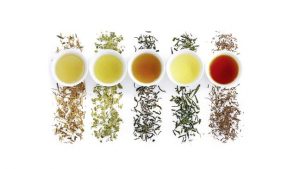Discovered 5000 years ago!
Tea originated in China. It is estimated that the tea plant was discovered there almost 5,000 years ago. This was a well-kept secret for a long time because it was not until 700 AD that tea was grown in Japan.
In the 17th century in Europe
The first tea boxes finally arrived in Europe at the beginning of the 17th century with the merchant fleets of the Dutch and British colonial rulers. Tea is prepared mainly from the uppermost leaves and leaf buds of the tea plant, which belongs to the genus Camellia family. It likes to grow wherever the climate is humid and warm.
China, India, Sri Lanka, and Kenya
The main growing areas are China, India, Sri Lanka, and Kenya. After picking, which happens in most cases by hand, the tea leaves are withered, rolled, fermented, dried, and sorted. In contrast to coffee, which is carried out in raw form, the tea leaves are already processed on the plantations and exported as finished tea. Generally, tea is divided into four types: green tea, white tea, and oolong tea, each infused with about 80 ° C of hot water, and black tea, for the preparation of which boiling water is used to achieve full flavor development.
There are countless varieties per tea species, e.g. Assam and Darjeeling (both black teas) or Sencha (green tea). In the German language, they also describe tea-like infusion drinks such as herbal tea, fruit tea, and Rooibuschtee as tea. Also common are flavored teas, smoked teas, or roasted teas. Tea is mainly consumed in the form of loose tea leaves or as a portioned tea (tea bag), more rarely as a powder or in a compressed form.
The trade names
In the trade, several names are common, in addition to the type of tea also provide information about the leaf size and appearance of the leaves: orange, pekoe, broken, fannings, or dust. This results in abbreviations such as FOP, TGFOP, and BOPF, which as well as the notes “First Flush” (first harvest in spring) and “Second Flush” (second harvest at the end of May) function as quality terms.



















